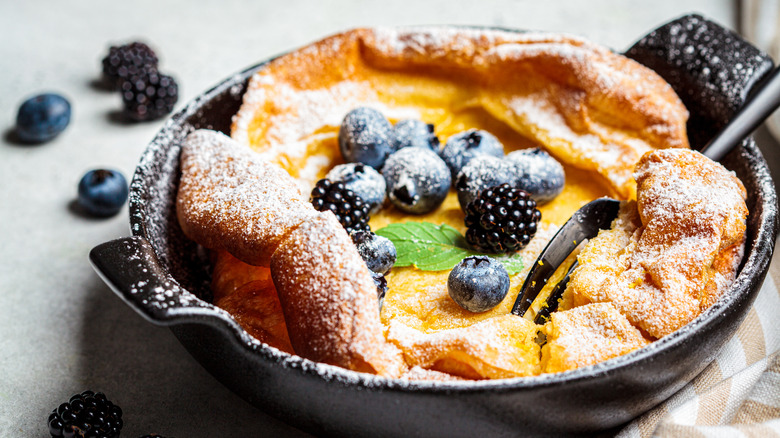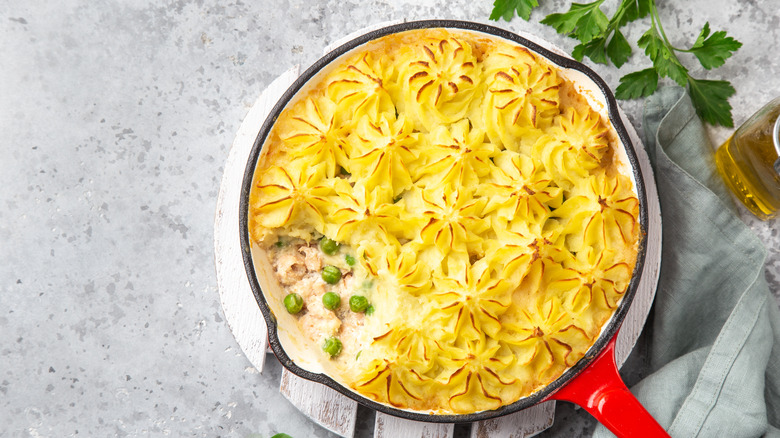The Real Difference Between Enameled And Regular Cast Iron Pans
A light and fluffy Dutch baby, a perfectly charred steak, and a gooey, deep dish pizza — the success of these dishes is up to the cook, you say? Perhaps. But it may actually have everything to do with the pan.
What is cast iron cookware? OvenSpot explains that regular cast iron pots and pans are made from melted iron that's cast as a single metal piece, including the handle. The cookware can maintain high heat and long cooking times, making it ideal for frying, searing, braising, stewing, and roasting. Serious Eats adds that cast iron cookware is your kitchen "workhorse" and can dish up everything from crispy potato hash, to flawlessly seared steaks, golden cornbread, and baked family dinners.
Enameled cast iron is coated with enamel glass particles that are fused to the iron with extreme heat. This layer of enamel (AKA paint) creates a non-porous coating that washes easily and, unlike regular cast iron, won't rust (via Chatelaine).
Boonie Hicks notes that, when compared to enameled pans, regular cast iron is more affordable, more durable (the paint won't chip), and can be used indoors and out, meaning over a grill, flame, or coals. That said, unlike regular cast iron, enameled pans require no seasoning (coating the pan with oil to create a nonstick surface). They are also suitable for acidic foods like tomatoes (which can develop an off-flavor when exposed to iron), are not prone to rust, and can be used in the microwave.
Which pan should you choose?
There is no correct answer here. The Kitchn explains that both regular and enameled cast iron pans are great conductors of heat and can be used in multiple recipe applications. The main differences are price (enameled is pricier) and the finish. There's also the matter of the cleaning method. Regular cast iron shouldn't be soaked in water, while enameled pans can get soapy and soaked. Consider if you'd like to cook in the microwave versus outdoors and the kind of durability you need. Regular cast iron won't chip like enameled, but it's prone to rust.
Uno Casa adds that regular cast iron works exceptionally well at all temperatures — low, medium, and high; but since the enamel coating is weak compared to raw cast iron, enameled pans work best at medium temperatures. Enameled cast iron also has a "lower thermal conductivity" when compared to regular cast iron, so it takes longer to preheat, The Kitchen Professor states.
The Washington Post points out that enameled pans are not actually nonstick, but they don't have the food-trapping porousness of regular cast iron either. But what if you want those little browned bits from the bottom of the pan incorporated into your sauce? Then regular cast iron is your huckleberry.

